Each one of our Touchstone Athletes embodies our core values, including a commitment to stewardship, community camaraderie, and pushing their limits—and Canaan Vallejos, former Dogpatch Boulders desk staff and our first ever running athlete, has all of that in spades. We sat down with him in this interview to get to know more about his background and what makes him tick. From running to riding, coffee to climbing, Canaan is a true renaissance man who doesn’t do anything in half-measures. We’re so proud to have him on our roster.
You’ve always been a very athletic person, even as a kid. Can you give us an overview of your introduction to running and climbing?
I was first introduced to running at an impressionable age, in middle school P.E. class. One of our physical fitness tests was to run a mile around our gravel track. I took a DNF [did not finish] on my first mile attempt at 9:40 upon passing out some 40 meters from the finish. Conditions weren’t great and it was a hot day. Nutrition and training also played a role in that day’s results.
One of our physical fitness tests was to run a mile around our gravel track. I took a DNF on my first mile attempt at 9:40 upon passing out some 40 meters from the finish.
Salty and spiteful, I signed up for a local track club that summer. We had tryouts one weekend where everyone tried each event. The club assigned the four strongest in each event to compete. By the end of tryouts, I didn’t make a signed event. I was assigned the dreaded 1500- and 3000-meter dashes, a purgatory of sorts. The others who were given the same assignments quit the team. I chose to not let the coaches’ decision discourage me and instead embraced it.
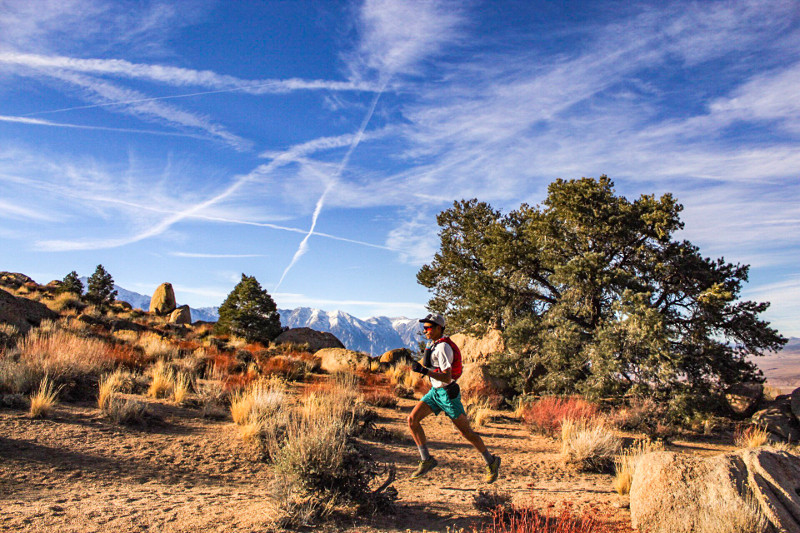
By the time I was 15, I’d earned four performances at the USATF Junior Olympic National Championships with three Top 12 finishes in the two events. I eventually gained invites from various collegiate teams. Western Colorado University and Adams State University were my favorite invites, but I chose to run NCAA Division 2 on scholarship with the University of Colorado at Colorado Springs. But during my Freshman year, I sustained a hip injury that took me out of the sport completely in 2005.
Having different views than the coach on the best way to rehabilitate my injury, I forfeited my scholarship and quit the team. Unable to run and seeing the amount of debt I would be facing to obtain my Biochemistry degree, I dropped out of college.
I learned that access to wilderness and open space is essential to my happiness, so I moved to California in 2013.
Once I couldn’t run anymore, I got into backpacking. I spent a good amount of time in central Colorado’s Sangre de Cristo wilderness. The terrain is stunning and quite different from the state’s northern and southern ranges, more resembling the Eastern Sierras. Feeling the need to try something new, I moved to Chicago’s Logan Square and Wicker Park neighborhoods to work in coffee. After four years of that, I learned that access to wilderness and open space is essential to my happiness, so I moved to California in 2013.
California was where I was introduced to cycling and climbing. I immediately fell in love with the sensation of grinding on the bike. Once I got a steel frame rigged for tours and camping, it was game over. Every weekend I was stealth camping in west Marin County along Highway 1. Now, I’m trail running in the same areas I’ve climbed and cycled, forging a deeper appreciation and communion with those beautiful open spaces.
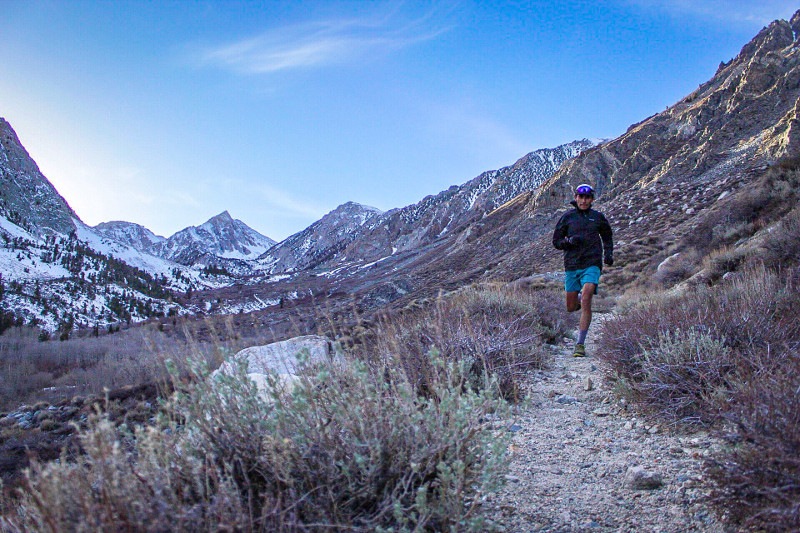
What got you into rock climbing?
I joined Touchstone in 2013 with goal of becoming a competent enough of a climber to pursue mountaineering and alpine climbing. Although I’d attended American Alpine Institute’s Level 1 outdoor leadership program and been climbing at Dogpatch Boulders for nearly a year, I must say my introduction to climbing was my first outdoor bouldering trip to Bishop. I rallied with some close friends through a January rainstorm and blizzard for nine and a half hours. When we arrived at the Eastside, my mind was blown by such a simple yet stunning environment. My first outdoor climb was Heavenly Path.
You’ve also gone through a pretty illustrious and long-lived career in coffee. What was that like? Did you compete?
I’ve worked in specialty coffee for 13 years. Following my hip injury in 2005, I was extremely bummed and had an identity crisis of sorts. I fell into a dark place and didn’t leave the house for over a month. My friends were worried about me and finally got me out one day. On the way home we stopped at a local coffee shop. This was my first time having legit coffee. I was overwhelmed. I left caffeinated and fascinated.
After that day, I began the process of rediscovering myself and started frequenting the shop. I was eventually offered a job. From there, I became obsessed and began attending Specialty Coffee Association of America symposia and events every year to learn more about brew and roast science.
I’ve competed in the World Latte Art Championships and Brewers Cup, along with several other random regional and local events, like the Aeropress Championships, Tasters Cups, and Latte Art Throwdowns.
I’ve worked with some of the most reputable companies in the country. I started on the retail side, making drinks as a barista and managing cafes. I’ve competed in the World Latte Art Championships and Brewers Cup, along with several other random regional and local events, like the Aeropress Championships, Tasters Cups, and Latte Art Throwdowns. From there, I transitioned to the production side where I’ve been a production roaster, production supervisor, and production operations director. I also consulted for a year in Santa Monica where I took on a project with Bodega Wine Bar to launch a daytime coffee program in eight weeks from ground zero in 2017. The cafe was a success and is now thriving on the west side. The success and quality of the coffee bar gained attention from Sprudge, an iconic coffee culture and news hub, and resulted in an article feature.
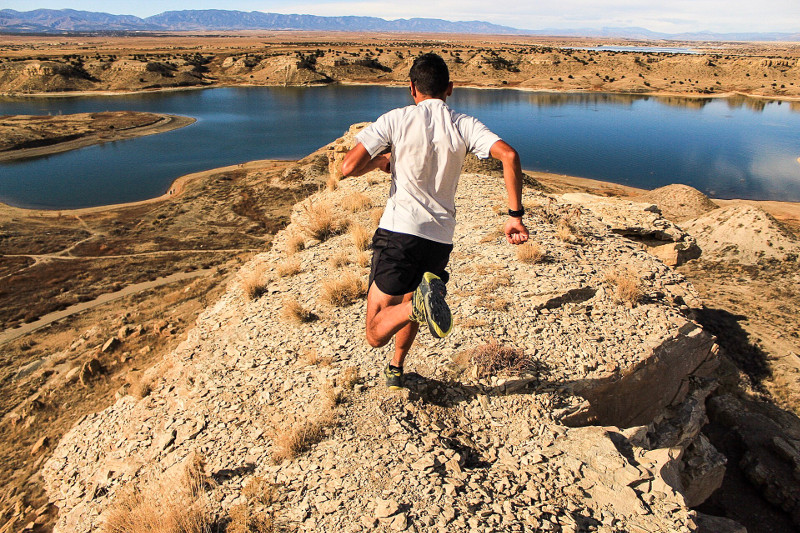
Touchstone Climbing is (obviously) a rock climbing gym company, and while we have members who are multi-sport athletes or don’t climb at all, so far you’re the first non-climbing Touchstone Athlete. What is it about Touchstone that makes it feel like a good fit for your running career?
Touchstone is more than a climbing gym company; it’s a hub for the camaraderie and growth of the outdoor community at large. This camaraderie extends much further than gyms’ premises. I can’t tell you how many times I’ve been at a crag or trailhead and have run into someone I know through a Touchstone gym, whether it’s been in the Eastern Sierras, Tahoe, Castle Rock, or even in Boulder, Colorado. To witness a company facilitate and encourage individuals to not only embrace and pursue outdoor recreation but to also appreciate the value of beautiful and wild places is unique.
Touchstone is more than a climbing gym company; it’s a hub for the camaraderie and growth of the outdoor community at large.
Some of the most meaningful friendships in my life have sprouted from simple conversations at the front desk of Dogpatch Boulders. Touchstone has been an integral part of my personal and outdoor development. Plus, many of my bucket list running goals include traversing alpine ranges, which requires a mix of running and climbing.
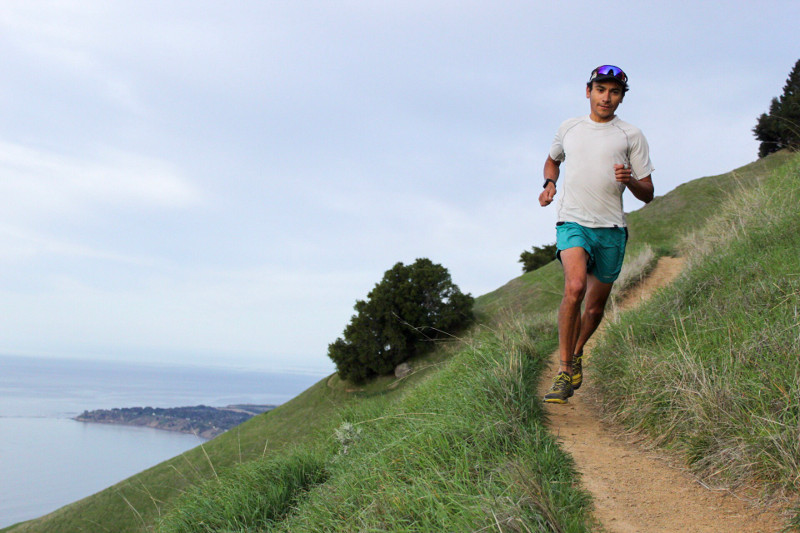
What do your training weeks look like? Do you ever run for fun?
How do I prepare for a mountain ultra trail race? Lots of time on the trails, usually 12+ hours per week. Training focus will vary based on the terrain of each race. A typical training week will include three hard effort workouts, two active recovery runs, one big day, and one rest day. Hard effort days will rotate between uphill sprints, uphill speed variation workouts, and progressive tempo to sustained threshold runs. Active recovery runs are just easy runs enjoying the view between hard effort days. Big days are focused on big mileage and big elevation change. Routes are usually 20+ miles with 10,000+ ft. in elevation change.
My training weeks also include two hours of foam rolling and three days of supplemental accessory work, focused on core strengthening and joint mobility exercises. Each workout takes about two hours, which brings my average weekly training time to roughly 20 hours. I’m now adding climbing three days a week into the mix so I can feel prepared for the upcoming alpine season.
I make it a point to keep my training fun. […] Putting too much focus on structure and outcome is a good way to lose the stoke.
Although I’m data driven tracking almost every aspect of my training, I make it a point to keep my training fun. I choose routes and locations based on where the conditions are best and where I feel most inspired. Often times I just feel like I’m a kid playing outside, laughing, screaming and flirting with limits—just some good ol’ fashioned fun. In my opinion, we develop the most when we’re having fun. I think about how much more I learned as a kid through games and fun group activities than I did jotting down notes of regurgitated jargon. Putting too much focus on structure and outcome is a good way to lose the stoke.
What’s your favorite place to run? Do you have a particular connection to any areas?
I grew up in Colorado. We’ve got lots of mountains over there and none are like Mt. Tamalpais. Some of the most beautiful views, thoughts and feelings I’ve experienced have been on that mountain. With its variety of rich history and lush landscapes, Mt. Tam is my favorite place to run. I absolutely love that mountain.
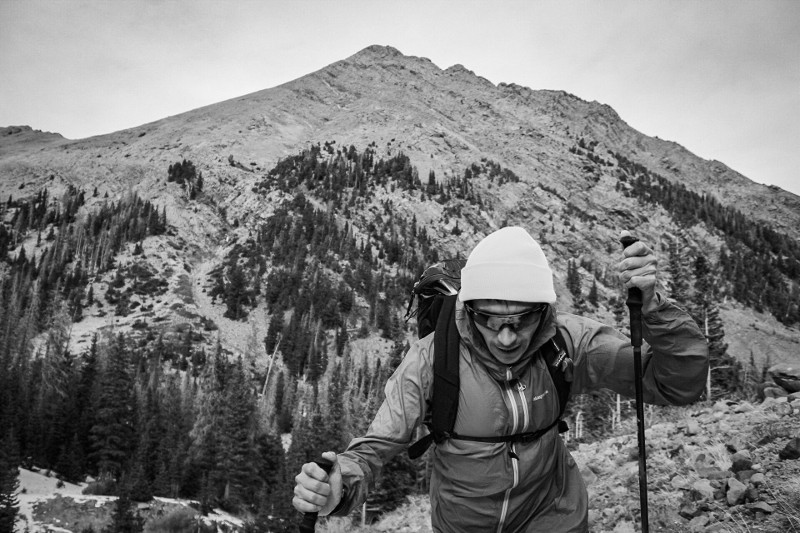
If you could only eat one thing to fuel your runs for the rest of your life, what would it be?
I currently thrive on large pizzas, burritos, and strong ales. If I were to have one thing to fuel my runs for the rest of my life, it’d have to be a large pizza inside a burrito. This kind of sounds like a hot pocket, doesn’t it?
…It’s not.
What’s a fact about you that other people might be surprised by?
When I was younger, I had a wicked mullet that draped down to my lower back. My hair is quite curly, so think Kirk Hammett…now think Joe Dirt. Boom. Nailed it.
Thanks, Canaan! If you see him out there on the trails, be sure to say hi. You can follow his endeavors on Instagram @canaan.vallejos and Strava.

